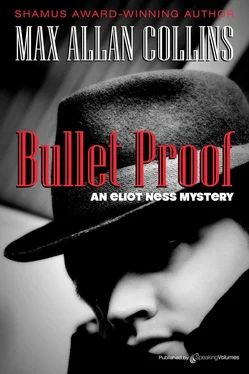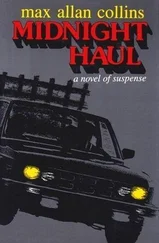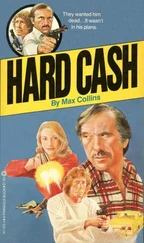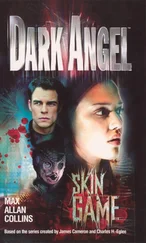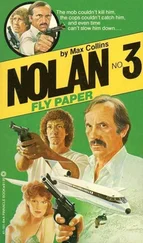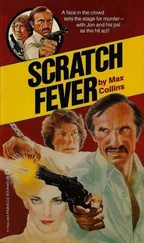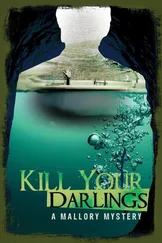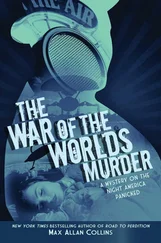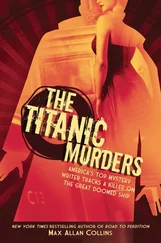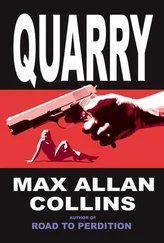Among the fictional characters in this book who have real-life counterparts are George Owens, Frank Darby, Cyril Easton, Mrs. Jack Whitehall, Sergeant Martin Merlo, David Cowley, Evelyn MacMillan, Joe McFarlin, and various incidental characters.
Vernon Gordon is a fictional character designed to represent (but not depict specifically) the Stouffer brothers, Vernon and Gordon. It was the now enormously successful international Stouffer's chain whose Playhouse Square restaurant renovation was the extortion and vandalism target of Don Campbell and John McGee. And it was the cooperation of the Stouffer brothers with Eliot Ness and Prosecutor Cullitan that made the case against Campbell and McGee possible; the Stouffers were indeed the state's star witnesses.
The major research source for this book was the files of various Cleveland newspapers of the day; but a number of books have been consulted as well.
Sources for the labor union aspect of this novel include: Dynamite (1934), Louis Adamic; Labor-Turbulent Years (1969), Irving Bernstein; Strike! (1972), Jeremy Brecher; in As Steel Goes,… Unionism a Basic Industry (1940), Robert R. R. Brooks; Teamster Rebellion (1972), Farrell Dobbs; and Teamster Politics (1975), Farrell Dobbs. Also, Union Guy (1946) by Edward Fountain provided ideas for the background of Jack Whitehall.
Four Against the Mob (1961) by Oscar Fraley, the co-author with Ness himself of The Untouchables (1957), is the only book-length nonfiction work on Ness in Cleveland to date. As mentioned previously, Fraley changed names and did some minor fictionalizing, apparently for legal reasons, and tended not to explore Ness as a man, possibly out of deference to Betty Ness, Ness's widow (and third wife). Nonetheless, his book remains a helpful basic source to me and I am grateful to Mr. Fraley for his work.
Ness has not yet been the subject of a book-length biography, but a number of excellent articles about him have been written by Cleveland journalists. Undoubtedly the best, and probably the single most helpful source to me, is the article by Peter Jeddick, collected in his Cleveland: Where the East Coast Meets the Midwest (1980). Also excellent is the article "The Last American Hero," by George E. Condon, published in Cleveland Magazine (August 1987); Condon's book Cleveland: The Best Kept Secret, includes a fine chapter on Ness as well, "Cleveland's Untouchable." Also helpful is the unpublished article written in 1983 for the Cleveland Police Historical Society, "Eliot Ness: A Man of a Different Era," by Anthony J. Coyne and Nancy L. Huppert. And extremely valuable is the unpublished, twenty-two-page article written by Ness himself on his Capone days, prepared as background material for co-author/ghost Fraley on The Untouchables.
Other references include Cleveland: Prodigy of the Western Reserve (1979), George E. Condon; Yesterday's Cleveland (1976), George E. Condon; The Tax Dodgers (1948), Elmer L. Irey and William J. Slocum; Cleveland Architecture 1876–1979 (1979), Eric Johannesen; Scientific Investigation and Physical Evidence (1959), Leland V. Jones; Cleveland-Confused City on a Seesaw (1976), Philip W. Porter; To Market to Market (1981), Joanne M. Lewis and John Szilagyi; and Criminal Investigation (1974), Paul B. Weston and Kenneth M. Wells.
A tip of the fedora to Joyce Magyar of Mid-American Glass of Davenport, Iowa, for the impromptu tour and for providing helpful information; and to contractor Chuck Bunn, for information regarding the construction business.
Finally, I would like to thank my editor Coleen O'Shea and her associate Becky Cabaza for providing a solid, enthusiastic support system; my agent Dominick Abel, for his counsel and friendship; and my wife Barbara Collins, whose love, help, and support make the work possible.
